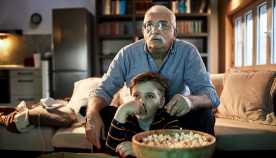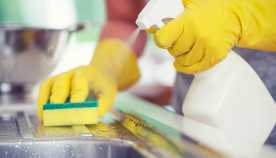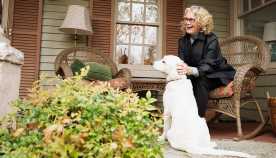AARP Eye Center
- right_container
- Health
- Money
- Work & Jobs
- Social Security
- Medicare
- Caregiving
- Games
- Travel
- More...
- Entertainment & Style
- Family & Relationships
- Personal Tech
- Home & Living
- Auto
- Staying Sharp
- Podcasts
- Videos
Amelia Island Museum of History
Mission:
In bringing alive the past, the Amelia Island Museum of History preserves, protects, and promotes the unique history of Amelia Island and its surrounding area for a diverse community of residents, researchers, and visitors.
History:
The Amelia Island Museum of History is bursting with fascinating stories that are just waiting to be shared with eager visitors and residents. From the Timucua Native American tribe to Spanish and French explorers, from the lawless spirit of pirates to the dignified air of Victorian-era residents, Amelia Island has been home to diverse cultures that have left an exciting heritage.
The Amelia Island Museum sees itself as the caretakers and disseminators of that exciting local history, which it shares not only through a wonderful variety of exhibits, but also by providing a multitude of programs throughout the community for all ages. The Museum also protects and shares local history with genealogists, homeowners and authors by providing a modern research facility. In the coming months, the Museum will highlight many of the varied and wonderful aspects of Nassau County history. But first, how did it all begin?
This story begins a surprising thirty years ago. In 1975, the Duncan Lamont Clinch Historical Society formed a committee to develop the concept for the creation of a museum which would collect items and interpret Amelia Island history. Around the same time, a collector named William Decker was amassing thousands of historical documents, artifacts and books focusing on local history and natural history. Mr. Decker was the caretaker at Ft.Clinch and an avid history enthusiast. His extensive butterfly exhibit had been on display at the 1933 Chicago World's Fair and he had also been a gun engraver for MGM studios. His son, Doug Decker, inherited his father's vast collection and felt it needed to be shared with the community.
In 1977, a board of 15 trustees from that original historical society committee incorporated themselves as a non-profit cultural institution under the name of the "Fernandina Historical Museum," with Edith Ferguson Shurley as president. At that time, the Museum hired its first employee, Barbara Stidfole, who began to catalog the collection. The group began to raise funds and to look for a permanent place to showcase this incredible collection. Many of the same people served on the boards of the Historical Society, the Restoration Foundation and the new Museum. The Museum group convinced the City of Fernandina Beach to purchase a portion of the Decker collection as a sign of good will toward and interest in safeguarding local history. The City subsequently donated the collection to the Museum, which stored the artifacts in the old schoolhouse on Atlantic Avenue.
During the 1970s, the President of the DLC Historical Society had convinced CSX to donate the old railroad depot at Front and Centre Streets to the Historical Society for the purposes of a Musuem. They in turn asked the City to take it over and act as caretakers of this historic building. What a perfect place for the local Chamber of Commerce! In 1978, thanks to close ties with the Chamber of Commerce who agreed to share the Depot Building, the first Museum was opened in the old Train Depot. The Decker Collection finally had a home and could be shared with the community. Portions of that collection were combined with traveling and rotating exhibits from the Smithsonian, Ft.Clinch, and the George Davis Collection of historic photos. This was an invigorating time for those who were interested in preserving and sharing Fernandina's rich heritage.
After a new jail facility was built on A1A In 1979, now the offices of the Sheriff, the old jail, in quite a horrible state of disrepair sat empty until Nassau County officials decided what to do with the badly deteriorated building at 3rd and Cedar Streets where rusty, leaking pipes, and walls with peeling paint characterized the structure. When approached by the Museum, the County Commission offered the museum a 99-year lease for $1 per year. With the acquisition of this new building, volunteers soon began the work necessary to create a functional exhibit space. When they began to tear out old bars on the windows and clear and clean a space for exhibits, the trustees felt strongly that they wanted to mark this change in a dramatic way. This new Museum, in a renovated building, needed a new name, so they created a contest geared toward school children to rename the Museum. The winner was the "Eight Flags Museum of Nassau County," which would extend the geographical focus of the Museum's historical message. After renovations of the four-room jailer's quarters, Dorothy Groshell was hired as the first full-time Museum Director. Portions of the Decker Collection were put on display with traveling exhibits located on the first floor of the building, and classroom tours and summer camps soon began in an effort to reach out to the community. In 1982, a new room was cleared to house the Museum's growing Victorian-era collection and a multi-media room was created as well. Susan McCranie Siegmund served as President during this early period and stated in a contemporary news article that "representing the Museum has been the biggest challenge of my life" but credited the true success of the Museum to "the individual efforts of many people," including volunteers, members, and local contributors.
AARP Events for Fernandina Beach
-
Featured Event
Aging Academy: Navigating Housing Options
Thursday, Feb 20, 2025 at 1:00 p.m. ET
Zoom
Online Event
-
Featured Event
Prepare to Care: A Family Caregiver's Guide
Wednesday, Mar 5, 2025 at 2:00 p.m. ET
Zoom
Online Event
-
Featured Event
Aging Academy: Elder Law Basics
Thursday, Mar 20, 2025 at 1:00 p.m. ET
Zoom
Online Event

with Automatic Renewal
- Immediate access to your member benefits
- Discounts on travel and everyday savings
- Subscription to AARP The Magazine
- FREE second membership

























































